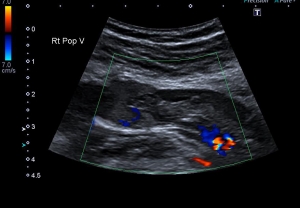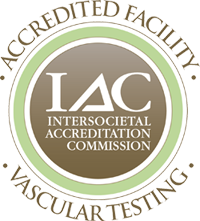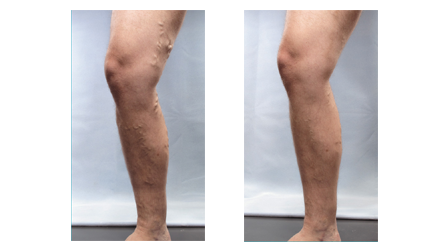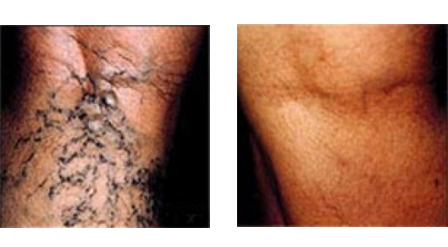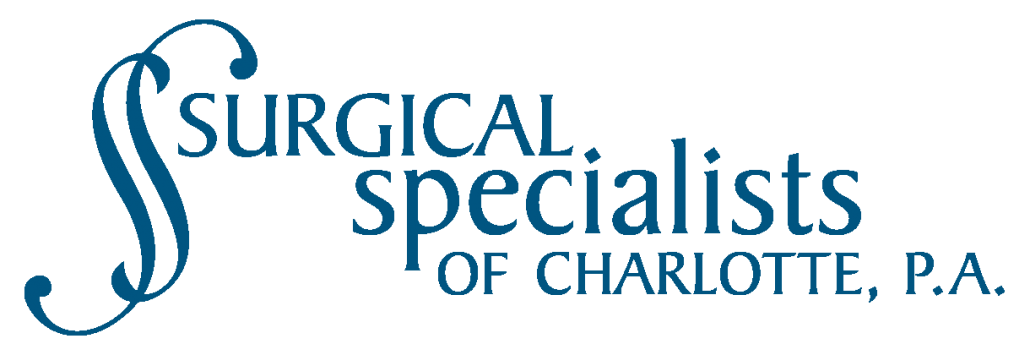Comprehensive Treatment For Varicose Veins And Venous Disease
Venous disease is more than a cosmetic issue, it’s a medical problem. That’s why the Vein Care Center at Surgical Specialists of Charlotte can make a difference. You’ll find the comprehensive vein care that can only be offered by surgeons specifically trained in arteriovenous disease. We have five dedicated surgeons who are vein specialists, with more than 70 combined years of treating venous disease.
With our in-house, accredited vascular lab we assemble a complete diagnosis and determine the best course of treatment. For most patients, one of our in-office, minimally invasive vein procedures can deliver dramatic improvements with little-to-no downtime or pain.
In this video, our vein surgeons explain how Surgical Specialists of Charlotte can treat varicose veins and venous disease.
Call 704-945-3515 to schedule an appointment.
Learn more at CharlotteVeinCenter.com
What Is Venous Disease?
Varicose veins are a symptom of venous disease. These abnormally swollen or enlarged blood vessels in the leg are caused by the failure of the valves in the veins to normally pump blood from the limbs back to the heart. The blood can pool, or even reverse. This condition is known as venous reflux, which is the cause of varicose veins and their related pain and symptoms. Treatment of varicose veins is often covered by insurance.
Chronic Venous Insufficiency
Untreated varicose veins can progress to a more serious form of venous disease called chronic venous insufficiency. Symptoms include:
- Pain
- Swelling
- Itching
- Burning sensations
- Restlessness legs
- Heavy feeling
- Skin damage
- Ulceration (In more severe cases)
Venous Disease Video
Diagnosis of Venous Disease
At our in-house accredited vascular lab, we perform vascular studies using ultrasound to map out the venous system in a patient’s leg. After we talk to the patient and understand the symptoms involved, we then review the ultrasound results to determine which treatment would be most appropriate. Click here to learn more about our vascular lab.
Nonsurgical Treatments For Varicose Veins
Each day we help patients who have suffered for years with trouble sleeping, walking and just enjoying life due to venous disease. Our in-office, nonsurgical treatments for varicose veins and vein disease can relieve symptoms of aching, burning, throbbing and itching legs. Only a local anesthetic is needed and most patients can get back to their regular activities the next day. After a complete examination, one of our vein surgeons will discuss which vein treatment option is best for your situation. Our nonsurgical treatments include:
Radiofrequency Ablation
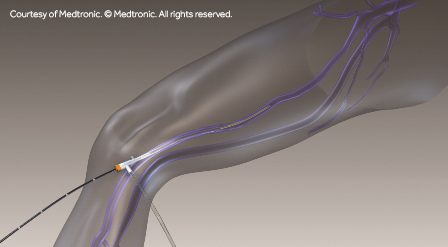 Also known as VNUS Closure, Venefit and ClosureFast, this minimally invasive procedure is used for the treatment of varicose veins and chronic venous insuffiency (CVI). Performed in our office using just local anesthesia, the tiny ClosureFast™ catheter is inserted into the affected leg. A tiny burst of radiofrequency energy causes the vein wall to shrink and collapse. The vein is sealed and “closed” when the physician withdraws the catheter. After the diseased vein is sealed shut, the blood is naturally re-routed to healthy veins. Because of the consistent level of heat delivered by the procedure, the patient experiences less bruising and a quicker recovery period than alternative laser energy ablations.
Also known as VNUS Closure, Venefit and ClosureFast, this minimally invasive procedure is used for the treatment of varicose veins and chronic venous insuffiency (CVI). Performed in our office using just local anesthesia, the tiny ClosureFast™ catheter is inserted into the affected leg. A tiny burst of radiofrequency energy causes the vein wall to shrink and collapse. The vein is sealed and “closed” when the physician withdraws the catheter. After the diseased vein is sealed shut, the blood is naturally re-routed to healthy veins. Because of the consistent level of heat delivered by the procedure, the patient experiences less bruising and a quicker recovery period than alternative laser energy ablations.
Varithena
Varithena is an injectable foam treatment for venous reflux that reduces the appearance and symptoms of varicose veins. This vein therapy was created to specifically treat problems with the great saphenous vein and its surrounding system, including twisted veins, veins above and below the knee, and veins previously treated with other methods.
Varithena treatment does not require any incisions or general anesthesia and usually takes less than an hour. During the procedure, a small amount of Varithena is administered through a catheter or by direct injection into the problem vein. The foam causes the vein to collapse and blood flow shifts to nearby healthy veins. Patients may resume some activities on the same day but should avoid heavy exercise for one week.
VenaSeal
The VenaSeal procedure is a minimally invasive approach that uses a medical adhesive to close a problem vein. It is a non-tumescent, non-thermal, non-sclerosant therapy for venous reflux. This procedure improves patient comfort and many patients return to normal activities immediately. There is no need for multiple needle sticks during the procedure and this approach eliminates the risk of nerve injury when treating the small saphenous vein. Patients also experience minimal-to-no bruising after the VenaSeal procedure.
Watch this video to see how the VenaSeal Closure System is used to treat malfunctioning leg veins.
Ultrasound Guided Sclerotherapy (UGS)
Also known as endovenous chemical ablation, this procedure’s purpose is to eliminate varicose veins that are hidden from the naked eye and can only be seen by ultrasound. A chemical irritant, called a sclerosant, is injected into the vein while the doctor observes the injection process on the ultrasound screen. The sclerosant damages the lining of the vein wall, collapses the vein, and eventually leads to the body reabsorbing the destroyed vein.
Minimally Invasive Vein Surgery
Ambulatory Phlebectomy (Micro-Phlebectomy)
This minimally invasive surgical technique is used to remove varicose veins that are located just under the skin. Using a tiny incision or incisions, the abnormal vein is extracted. Only a local anesthetic is required for this procedure. These micro-incisions are so small, a stitch is usually not needed. Patients see results within weeks of treatment. This procedure is often performed along with sclerotherapy.
Cosmetic Treatment For Spider Veins
Spider veins (telangiectasias) are tiny superficial blood vessels often found on the calves, thighs, and ankles. These veins are generally not considered a health problem, but symptoms such as itching, burning, and achiness can occur and will worsen if left untreated. Causes of spider veins include heredity, pregnancy, prolonged standing or sitting, trauma or pressure, and hormonal changes.
Sclerotherapy is the gold standard in treating cosmetic spider veins. Using a tiny needle, a solution is injected into hte problems veins, causing the vein walls to swell, collapse and fade away within a few weeks. For best results, three to five treatments per affected area may be required. Patients need to wear compression stockings after each treatment but can resume normal activities almost immediately.
Compression Stockings
Most insurance providers require patients to wear prescription-grade stockings for a period of time before any vein procedure is performed to see if symptoms improve. Generally, most vein procedures require the wearing of stockings for approximately two weeks after treatment.
